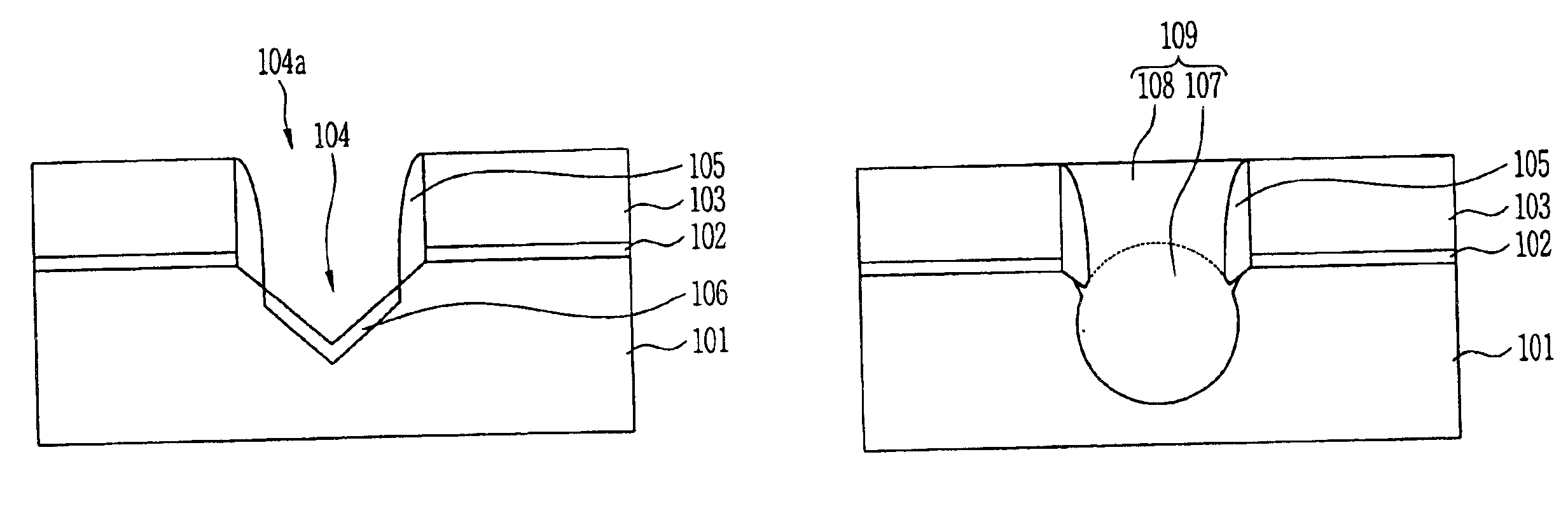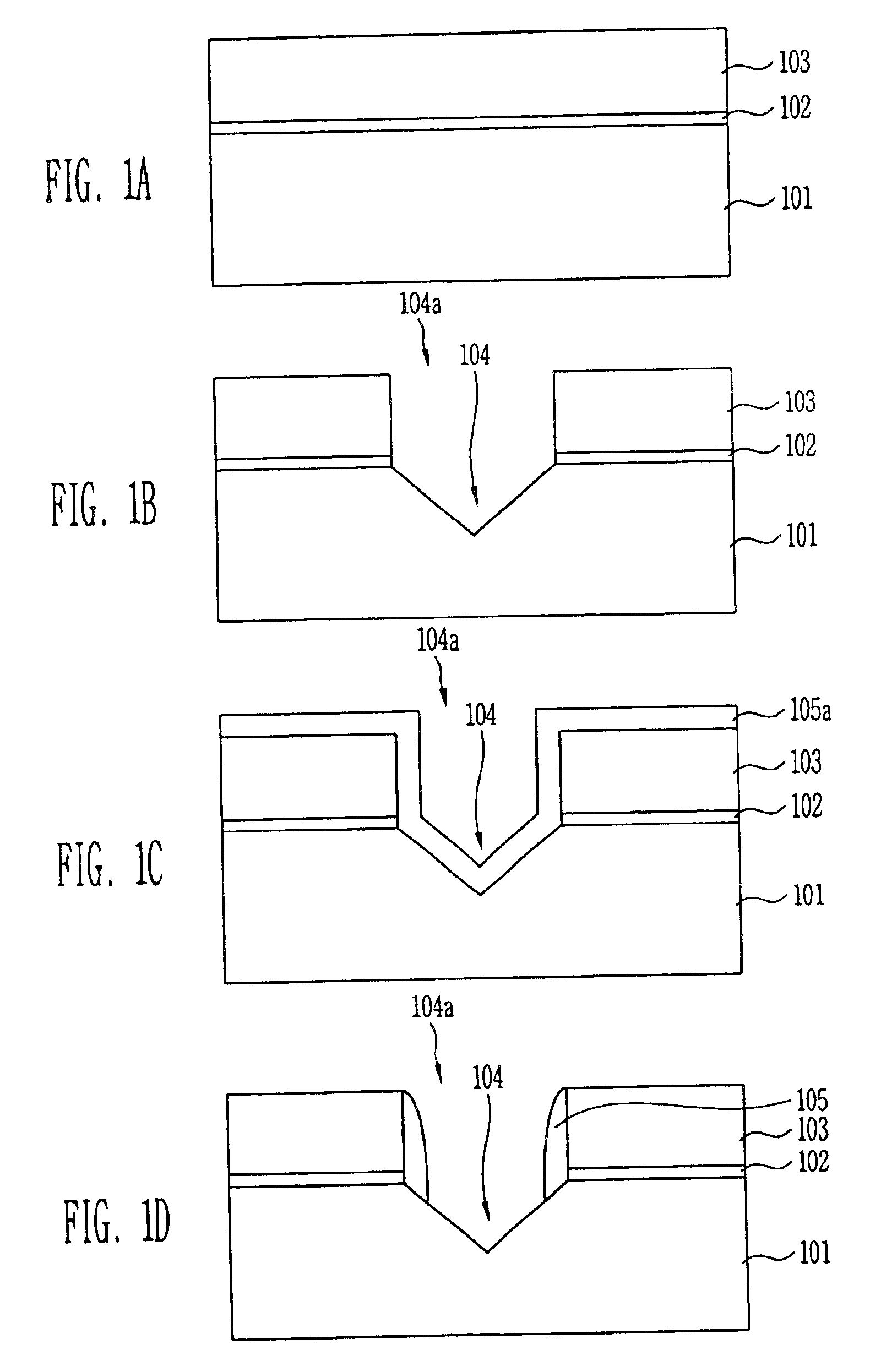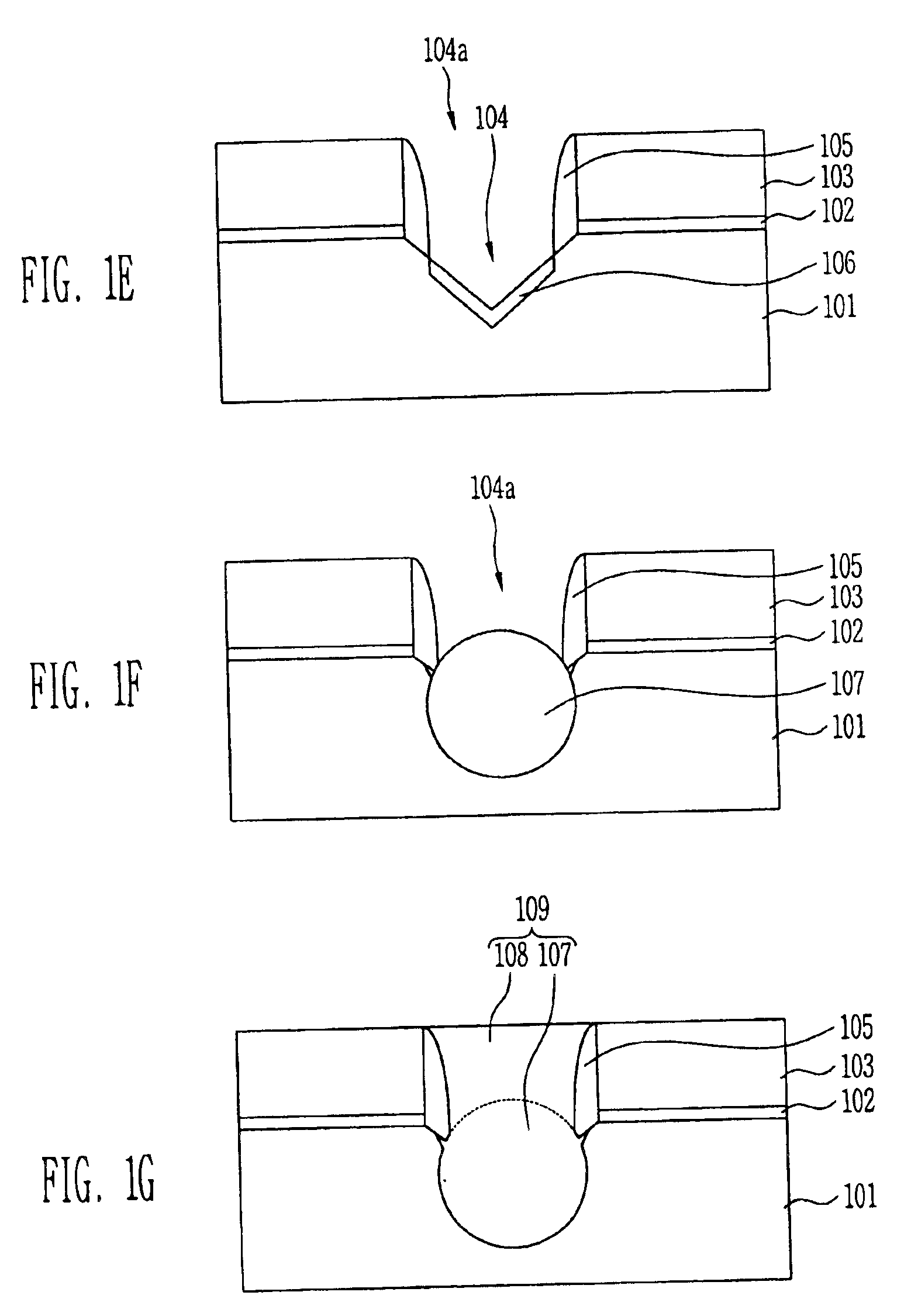Method of forming an isolation layer in a semiconductor devices
- Summary
- Abstract
- Description
- Claims
- Application Information
AI Technical Summary
Benefits of technology
Problems solved by technology
Method used
Image
Examples
Embodiment Construction
Reference will now be made in detail to the preferred embodiments, examples of which are illustrated in the accompanying drawings, in which like reference numerals are used to identify the same or similar parts.
A method of forming an isolation layer in the semiconductor devices will be now described in detail by reference to FIG. 1A through FIG. 1L.
Referring now to FIG. 1A, a pad oxide film 102 and a pad nitride film 103 are sequentially formed on a semiconductor substrate 101, in order to prohibit generation of crystal defects on the entire structure and implement surface processing.
The pad oxide film 102 is formed in thickness of 50˜70 Å by means of dry oxidization mode or wet oxidization mode at a temperature of 750˜900° C. Further, the pad nitride film 103 may be formed in thickness of 700˜2000 Å by means of LP-CVD method. At this time, the thickness of the pad nitride film 103 is not limited to the above value. Instead, the thickness of the pad nitride film 103 may be determine...
PUM
 Login to View More
Login to View More Abstract
Description
Claims
Application Information
 Login to View More
Login to View More - R&D
- Intellectual Property
- Life Sciences
- Materials
- Tech Scout
- Unparalleled Data Quality
- Higher Quality Content
- 60% Fewer Hallucinations
Browse by: Latest US Patents, China's latest patents, Technical Efficacy Thesaurus, Application Domain, Technology Topic, Popular Technical Reports.
© 2025 PatSnap. All rights reserved.Legal|Privacy policy|Modern Slavery Act Transparency Statement|Sitemap|About US| Contact US: help@patsnap.com



